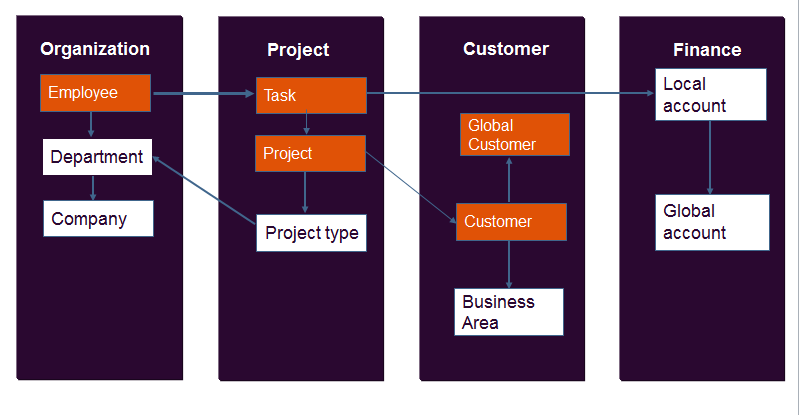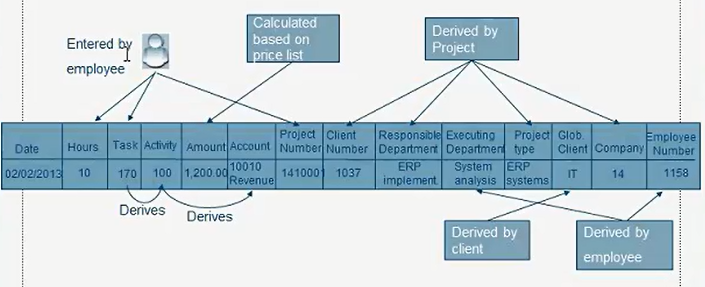When a New Entry Is Added
When you add a new entry (such as a new General Journal line or a new Job Journal entry), Maconomy performs dimension derivation using the procedure below.
Note: In the description below,
P1 is used for the information type with the highest priority,
P2 is for the second highest priority, and so on.
| Step | Description |
|---|---|
| 1 | Maconomy transfers the P1 value to the entry based on the following:
This occurs regardless of whether a value is entered manually in this entry for the dimension. |
| 2 | Step 1 repeats for the subsequent values with priority numbers (P2, P3 and so on, skipping any values that are overwritten or not added). Maconomy keeps any manually entered values that are not overwritten by a derived value. While the values mentioned in Step 1 are transferred to the entry, these values are only derived to blank dimensions in the entry. Values are not transferred to dimensions which have already received a derived value from a higher-priority information type. Also, values are not derived to dimensions in the entry which still have a manually entered value from when the entry was created. |
| 3 | This step only occurs when deriving dimensions in the sub-tab of windows where dimension values are specified in the tab. In this case, “context values” are used. This is a value which is specified in the card part of a window and transferred to the table part if Maconomy cannot derive a value for this dimension using the manually entered values. If, at this point, one or more dimensions still have not derived a value, Maconomy retrieves the values for those dimensions from the card part of the window. |
| 4 |
If any dimensions still have not received a value, Maconomy uses the standard value for this dimension from the System Parameters window. |
Example 1
The example below shows the flow of information in dimensions.

Example 2
The example below shows how a simple time transaction where an employee identifies the Project, Task, and Hours, will automatically derive a number of important reporting identifiers, referred to as dimensions.

Parent Topic: Dimension Derivation Process